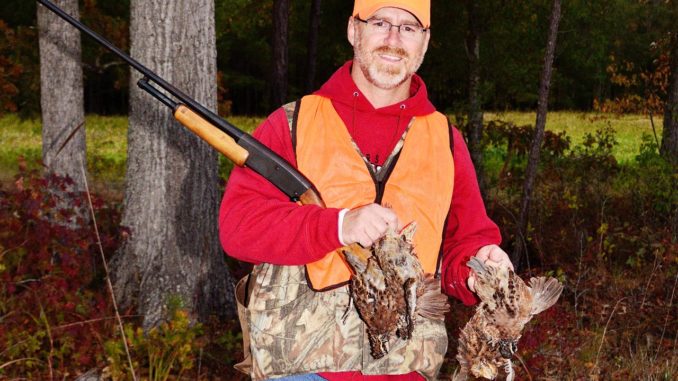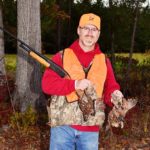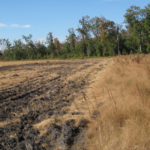
Habitat manipulation can turn things around
Quail season for bobwhite quail ends when February departs, leaving many purists with heavy heads. If the season didn’t quite produce the best results, hunters and land managers have nearly nine months available to make a change. Historic land-management activities that nurtured historic quail populations can still work today.
While the Carolinas have several million acres of publicly owned land, the fate of bobwhite quail is in the hands of private landowners. The millions of acres of private land are capable of providing massive amounts of quail habitat, and landowners play a key role to the stability of bobwhite populations.
Quail hunting has a long tradition in the southeast. For hunters with a half a century of bobwhites under their belts, fantastic bird hunting is long burned in their memory and continues to surface during routine fireside dialogue. Unfortunately for many enthusiasts, the lack of birds on their properties causes heartaches that transform many well-trained bird dogs into expensive pets. However, it doesn’t have to be that way. Quail hunters can improve their habitat and make this southern tradition great again by restoring quail populations back to historic levels.
Bobwhite quail are native to the southeast. Every county in the Carolinas once had thriving populations of quail. Native American influences created some of the best habitat possible, with frequent burning of fields and neighboring woodlands. As the Europeans arrived, more forestlands were cleared and converted into agriculture fields that provided additional habitat for quail.
By the 1950s, agriculture in the Carolinas was a big business that maintained a massive conglomeration of ideal habitat for these feathered fowl. Quail were flourishing, and hunters were having the time of their lives. Over half the hunters in the Carolinas between 1950 and 1980 were equipped with Brittany spaniels, pointers or English setters. Habitat was abundant, and birds were everywhere. Quail hunting was about as good as it could get, but the Carolinas were changing.
The massive collection of agricultural operations were beginning to slowly disappear. Quail had to make room for the exploding human population. Former agricultural operations were converted into subdivisions and other development to accommodate suburban growth. And as the forest-products industry in America grew, forested lands gained importance over agricultural uses. Many fields were turned back to forests.
Since the late 1970s, quail habitat has been under attack, the victim of change in America. However, large landowners or hunting clubs with a large amount of acreage can have fantastic quail hunting opportunities.
If hunters have any quail on their lands, they can turn around the declining trend, because quail are capable of reproducing quickly under the right conditions. A breeding pair can produce two to three broods annually, with 12 to 16 eggs per clutch. And the young can be sexually mature in as little as 15 weeks.
The best quail habitat is an interwoven combination of agriculture fields, brush lands and woodlands. Quail need woodlands the least and open lands the most. They need both active agriculture and idle croplands equally.
Quail will nest and roost on the ground. Nesting and roosting areas are critical. Quail will roost and nest in areas that can be characterized as a combination of brush and grass close to their food source. The roosting and nesting areas must be wide to gain the most benefits. For the best effects, roosting and nesting areas should be more than 100 feet wide to protect quail from terrestrial and aerial predators.
One of the most-important aspects of any quail management project is to maintain escape and travel routes. Not only are quail treasured by hunters for their table fare, there is a long list of predators standing in line to get a belly full of fresh quail thighs. To avoid predation, bobwhites need protected travel corridors between nesting and feeding areas. Landowners should maintain these 40- to 50-foot wide corridors with tall grasses and shrubs. Some of the best places to create travel corridors are along fencerows, ditch banks and other field edges. Discourage clean farming and advanced road-shoulder maintenance activities. Quail need all the help they can get.
Inactive areas around farm buildings or other waste areas not in production are perfect places to allow grasses to grow and create habitat. Additionally, every farm has some areas where crops don’t grow very well. Farmers can allow these areas to grow up to provide habitat for quail.
For land managers with significant acreage dedicated to timber management, quail-habitat modifications are available without straying too far from timber-management guidelines. In select timber stands close to food plots, agriculture fields and quail management locales; landowners should conduct an aggressive, selective harvest to reduce the basal area and leave 10 to 15 trees per acre (or less). The residual timber stand will allow sunlight to penetrate to the forest floor and encourage early successional growth of pioneer species. Grasses and shrubs will quickly grow, providing excellent habitat for quail.
Additionally, a low-intensity fire in early spring conducted in these thinned pine stands will benefit quail greatly. Burning exposes soil and will quickly encourage the growth of grasses, forbs and small shrubs. Quail will use these areas immediately for foraging, roosting, and eventually nesting over the summer.
So if you’re not satisfied with how quail season went, take nine months to begin a strategy to make next season better. Nesting season begins in May, so it’s time to act to create ideal nesting, brooding and roosting habitat. Even if landowners cannot make the huge changes needed at first, small changes each year can make a large impact on bobwhite quail populations in the future.






Be the first to comment